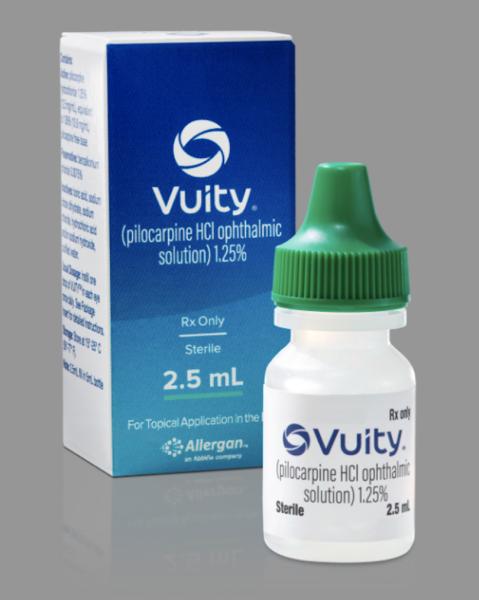Pilocarpine Ophthalmic Side Effects
Medically reviewed by Drugs.com. Last updated on Aug 13, 2024.
Applies to pilocarpine ophthalmic: ophthalmic solution.
Precautions
If you will be using this medicine for more than a few weeks, your eye doctor will check your eyes at regular visits to make sure it is working properly and is not causing unwanted effects.
Serious eye or vision problems (eg, retinal detachment, retinal tear) may occur during treatment with this medicine. Check with your doctor right away if you are seeing flashes or sparks of light, seeing floating spots before the eyes, or a veil or curtain appearing across part of your vision.
For patients using the eye drops or eye gel:
- This medicine may cause blurred vision and may make you have trouble seeing at night or in dim light. Do not drive, use machines, or do anything else that could be dangerous if you are not able to see clearly.
For patients using the eye insert:
- For the first several hours after you insert this unit in the eye, your vision may be blurred or there may be a change in your near or far vision, especially at night. Therefore, insert this unit in the eye at bedtime, unless otherwise directed by your doctor. If this unit is inserted in the eye at any other time of the day, make sure your vision is clear before you drive, use machines, or do anything else that could be dangerous if you are not able to see well.
Serious side effects
Along with its needed effects, pilocarpine ophthalmic may cause some unwanted effects. Although not all of these side effects may occur, if they do occur they may need medical attention.
Check with your doctor immediately if any of the following side effects occur while taking pilocarpine ophthalmic:
More common side effects
Less common side effects
- blurred vision
- eye irritation or pain
- watering of the eyes
Incidence not known
- chest tightness
- fast heartbeat
- fever
- hives, itching, skin rash
- irritation
- joint pain, stiffness, or swelling
- redness of the skin
- seeing flashes or sparks of light
- seeing floating spots before the eyes, or a veil or curtain appearing across part of vision
- swelling of the eyelids, face, lips, hands, or feet
- trouble breathing
Other side effects
Some side effects of pilocarpine ophthalmic may occur that usually do not need medical attention. These side effects may go away during treatment as your body adjusts to the medicine. Also, your health care professional may be able to tell you about ways to prevent or reduce some of these side effects.
Check with your health care professional if any of the following side effects continue or are bothersome or if you have any questions about them:
More common side effects
- decrease in night vision
- headache
See also:
For healthcare professionals
Applies to pilocarpine ophthalmic: compounding powder, ophthalmic gel, ophthalmic insert, ophthalmic solution.
General adverse events
The most commonly reported side effects were accommodative change, blurred vision, eye irritation, visual impairment, and eye pain.[Ref]
Ocular
- Common (1% to 10%): Accommodative change, blurred vision, eye irritation, visual impairment, eye pain
- Frequency not reported: Ciliary spasm, itching, smarting/burning, sensitization of the lids and conjunctival vascular congestion, transient myopia, lens changes with chronic use, decrease in visual acuity in poor illumination, increased pupillary block, vitreous hemorrhaging, retinal detachment[Ref]
Cardiovascular
- Frequency not reported: Changes in blood pressure, cardiac rhythm[Ref]
Dermatologic
- Frequency not reported: Sweating, increased salivation, lacrimation[Ref]
Nervous system
- Common (1% to 10%): Headache, browache
- Frequency not reported: Tremor[Ref]
Respiratory
- Frequency not reported: Bronchial spasm, pulmonary edema[Ref]
Gastrointestinal
- Frequency not reported: Nausea, vomiting, diarrhea[Ref]
References
1. "Product Information. Pilopine-HS (pilocarpine ophthalmic)." Alcon Laboratories Inc
2. Cerner Multum, Inc. "UK Summary of Product Characteristics."
3. Cerner Multum, Inc. "Australian Product Information."
More about pilocarpine ophthalmic
- Check interactions
- Compare alternatives
- Pricing & coupons
- Reviews (3)
- Dosage information
- During pregnancy
- Drug class: ophthalmic glaucoma agents
- Breastfeeding
- En español
Patient resources
Other brands
Vuity, Qlosi, Pilocar, Isopto Carpine, ... +2 more
Professional resources
Other brands
Related treatment guides
Further information
Pilocarpine ophthalmic side effects can vary depending on the individual. Always consult your healthcare provider to ensure the information displayed on this page applies to your personal circumstances.
Note: Medication side effects may be underreported. If you are experiencing side effects that are not listed, submit a report to the FDA by following this guide.

